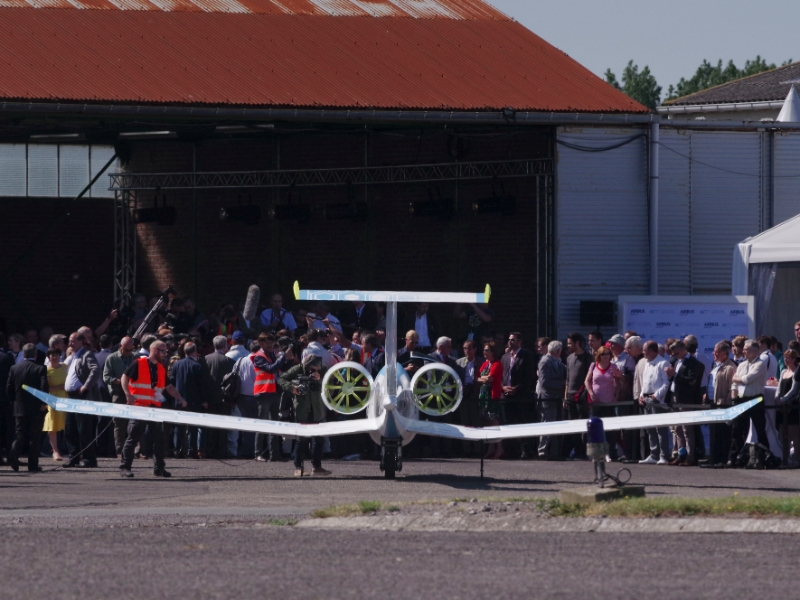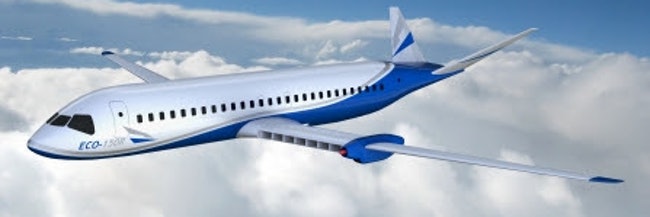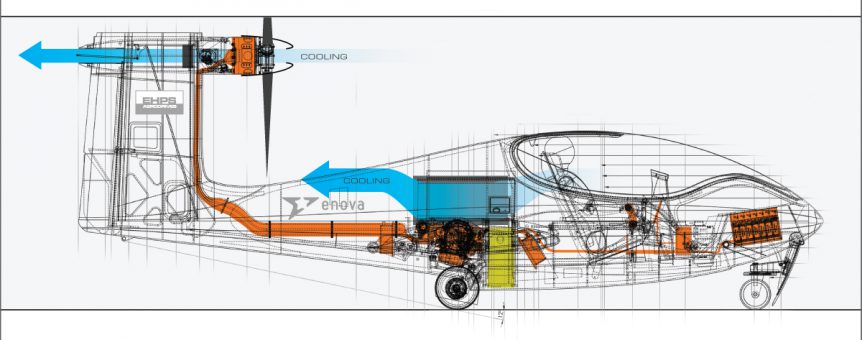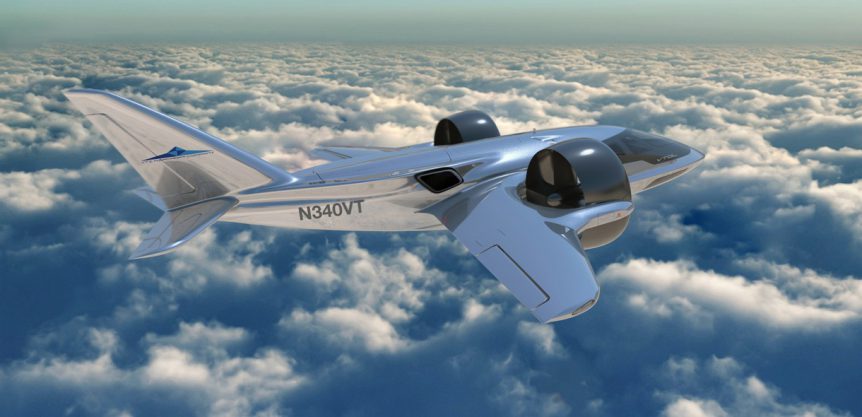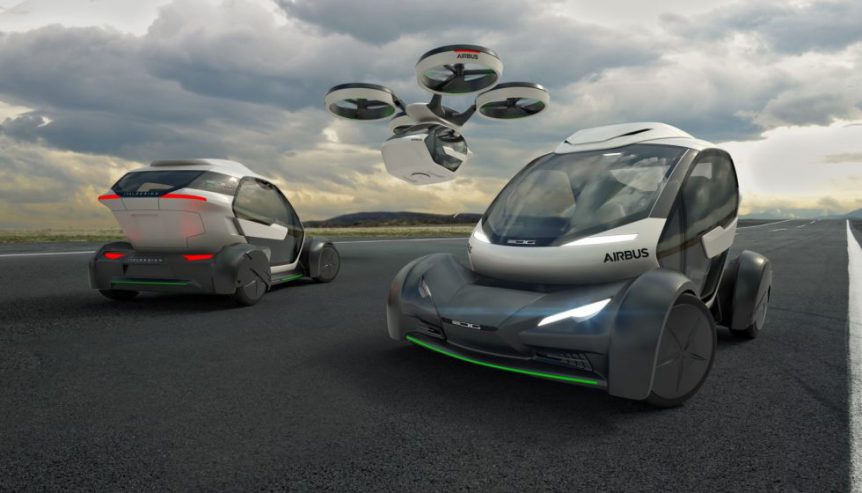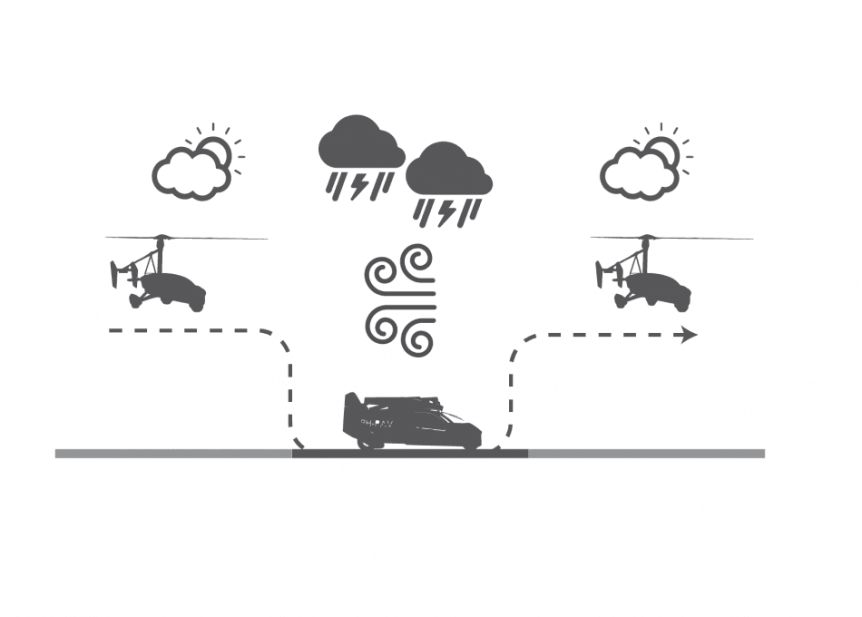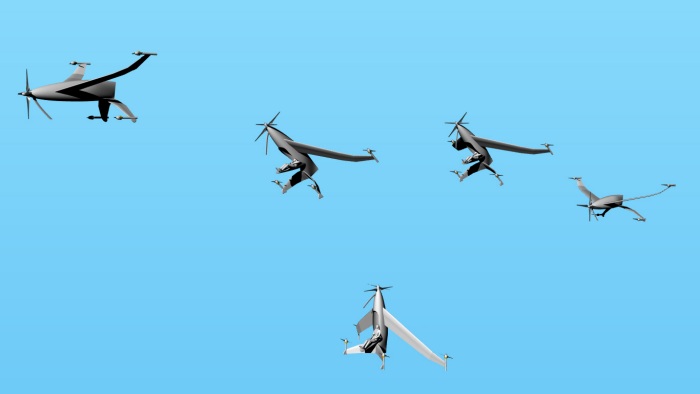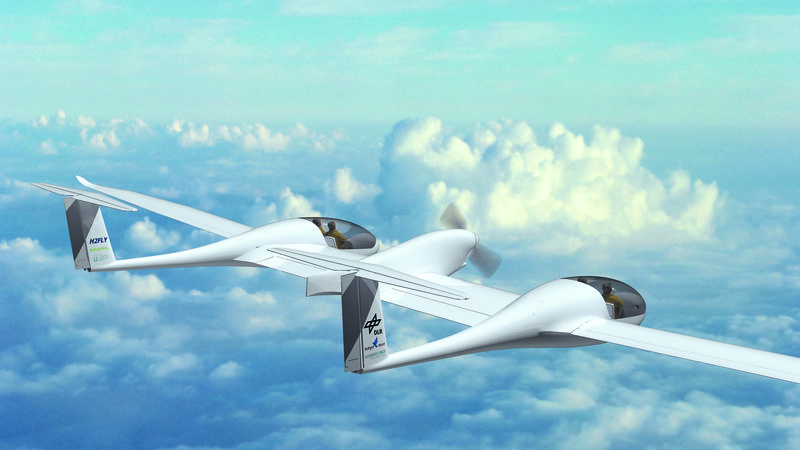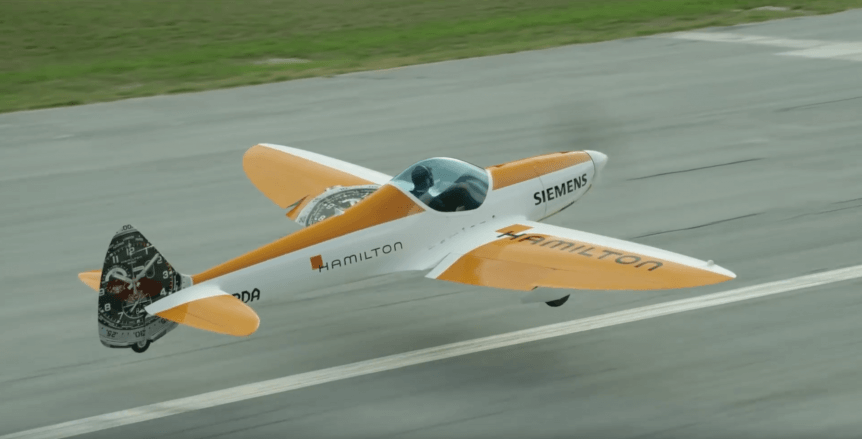Much like waiting for the single-person ram-jet helicopter to show up in your garage, you’ll be left hanging for a two- or four-seat Airbus e-Fan to grace your hangar. Although not sharing the news in its “Innovation” or press release sections on its web site, Airbus has announced that it’s dropping plans to produce an E-Fan family of personal aircraft. It will move instead into developing a larger, more powerful aircraft, the E-Fan X, that could fly within three years. Airbus started with a four-motor rendition of the Cri-Cri, four MGM Compro units twirling contra-rotating propellers and producing 60 horsepower. Their “Innovation” program followed that with the tw0-seat E-Fan, and announced plans to build these in series at their cleverly named Voltair plant in southwest France. Airbus further suggested series production would begin on a four-seat E-Fan 4.0 touring aircraft. They showed a hybrid version of the E-Fan 2.0 trainer at Oshkosh in 2016. But they are moving on toward bigger …
Paris to London Using No Fossil Fuels
Jeff Engler fired up a start-up, Wright Electric, about a year ago. Last week, he presented at the Y Combinator Winter 2017 Demo Day – a semi-annual event where venture capitalists can meet the latest in venturesome mendicants. Tech Crunch describes the firm’s goals, which include electric flights between London and Paris on no fossil fuels – ambitious to say the least. “Wright Electric wants to build the world’s first electric airplane (at least the first 150 seat electric airliner). One of the main reasons airlines like Southwest can offer low fares is that they pre-purchase gas, but Wright sees an opportunity to make flights even cheaper by using electric planes instead. The company is targeting the 30 percent of all flights that are 300 miles or less, and is partnering with EasyJet to start. As technology improves, it believes its planes will be able to go after the $26 billion short-haul flight market.” Jeff has managed to attract a …
Equator P2 Assembled, Ready to Go
Exciting new pictures from Tomas Brodreskift show that his nearly decade-long project has reached a happy completion. The Equator P2, born in the mind of a talented industrial designer, seemed like a nice dream when your editor first saw it in renderings. As one would expect from an accomplished product designer, the aircraft looked wonderful, set in inspiring backgrounds. A Man, A Plan, An Airplane As Tomas’ web site explains, “In 2008 the two Industrial Design students and pilots Tomas Broedreskift and Oeyvind Berven started work on the new EQP2 Xcursion, Equator’s first attempt on the light aircraft market. In this start–up phase the Equator team are working on making project assignments, design briefs, and specified diplomas that can be worked on by students. Therefore we encourage every student with relevant studies and an aerospace dream to join our efforts and in time become part of the new Equator Team that will ultimately bring amphibian flying to a new level. …
George Bye – Electric Aerospace in Small, Medium and Large
George Bye has been crafting and testing electric aircraft for the last decade and now has four craft of varying size demonstrating the reach of his vision. Bill Moore interviewed George for EVWorld.com recently. We’ll review the airplanes with which George is involved, starting small and working up to a spectacular cross-country cruiser. Silent Falcon Although the UAV company associated with the Silent Falcon is not part of Bye Aerospace, it had its origins there. Now located in Albuquerque, New Mexico, Silent Falcon operations are overseen by John Brown, former Chief Financial Officer (CFO) for Bye Energy. Silent Falcon’s glider-like 14-foot wing, high efficiency airfoil, electric power and high-efficiency solar cells allow up to five-hour surveillance flights. Its ability to carry a large contingent of cameras, sensors and mapping systems make it a good candidate for ISR (intelligence, surveillance, reconnaissance) missions in civilian or military operations. The airplane has scored a first civilian sale to Precision Vectors Aerial Inc. of …
Pop.Up – Airbus Pops Up with Another VTOL Commuter
What will Pop.Up next? We’re floating away, being carried skyward by PAL-V’s, JetPack’s 12-rotor machine, e-volo’s 16-rotor design, and even Hoversurf’s four-rotor flying donor-cycle. At least a half-dozen other varieties of VTOL (vertical takeoff and landing) commuter machines are coming at us with bewildering speed. If nothing else, the competing visions of future aerial transport show some kind of deeply felt need to escape the surly bonds of earth, or at least its eternal gridlock. Airbus has already played one hand, showing its cards with Silicon Valley-based A3 (A Cubed) and a vehicle looking like a combination of NASA’s X-57 Maxwell and Joby Aviation’s S2. It pulled another card from its sleeve this week at the Geneva Auto Show, unveiling its Pop.Up concept vehicle, conceived with ItalDesign. Pop.Up is a carbon-fiber pod that can be attached to self-driving wheels, a railway or Hyperloop link, or lifted by an eight-rotor autonomous drone carrier. An artificial intelligence platform will determine the best …
PAL-V Goes on Sale in America
Pal-V is a “flying car” that looks more like a flying motorcycle. Its three wheels would make it so in many countries. It flies as a gyrocopter, maintaining a sporty approach to its transition from ground to air. One reader has suggested dropping the term, “flying car,” even though it has captured reporters’ (and America’s) imaginations for the last hundred years. Dutch Treat? The Dutch creation, under development for close to a decade, looks like a plausible contender for an all-purpose transportation device. Its compact dimensions mimic a car on the ground, and its clever unfolding to become a gyrocopter allows quick and apparently easy transition from one mode to another. The company calls the total experience, “FlyDriving.” In “car” mode, its rear suspension geometry allows leaning into the corners with “Dynamic Curve Stabilizer” control, very much like a motorcycle. The closed two-seat cabin is considerably less raucous, though, than open-air motorcycling. In aircraft mode, its 87 mph cruising speed …
Dale Kramer’s VLazair – Swinging a Different Way
Dale Kramer’s Lazair was one of the most popular ultralights in the 1980s, selling over 1,200 units. He re-engineered it a decade ago and flew the electrically-powered version in both land and amphibious versions. Appearances at AirVenture saw him making daily flights over the area. Your editor was privileged to visit Dale’s home, once owned by Glenn Hammond Curtis in Hammondsport – who also flew his creations from Keuka Lake, one of New York’s Finger Lakes for which the region is named. Ever an inventive soul, Dale has returned to the drawing board, in his own way answering the question of how to perform vertical takeoffs and landings in a small, light, personal aircraft. To overcome pilot’s getting cricks in their necks, The VLazair has a constant-frame-of-reference seat. The seat swings around during takeoffs and landings to keep the pilot upright, avoiding the rear-view mirror technique used in previous such craft from Convair and Lockheed. VLazair will have a 100-horsepower Rotax …
SA Symposium 2017 – An April Festival of Electric Flight
April 21 and 22, 2017, set your GPS for N 37° 31′ 20.84” W 122° 15′ 38.31” – the Hotel Pullman San Francisco Bay. The refined and beautiful setting and four-star accommodations make a grand accompaniment to the story we will share. The story of the 2017 Sustainable Aviation Symposium includes the latest in aerodynamics, electric power and energy storage. It’s a grand and sweeping review, told by talented intellects in the context of using the latest technology to help save the planet. A few exemplars of the program highlight this year’s story, “ A Keynote Address from a Master Designer Tine Tomazic, Director of Research and Development for Pipistrel, created the G4 to win the 2011 Green Flight Challenge, the Alpha Electro Trainer, and the Hypstair hybrid speedster. His pioneering forays into electric power have made him a leader in development of everything from airframes to instrumentation. What will he come up with next? He might share that at …
Mike Friend’s Hybrid Electric Solution
Electric airplanes currently can give 15 or 20 minutes of intense aerobatics, or about an hour of more sedate cruising. What if you had a lovely little airplane that invited flinging it about the sky, but you still wanted to visit distant places? In 2005, Mike Friend owned a Silence Twister, a Spitfire-like single-seater registered as N787M, a nod to Mike’s employer, Boeing. He thought about making it a hybrid craft. Waiting for Batteries An early effort around 2010 by a German company to electrify the Twister did not produce a surge of orders, and Mike presented a 2011 symposium feature on making a hybrid out of the Twister to reduce its fuel burn while retaining its frisky character. That approach would have used a pod under the belly of the Twister, making it look like a fighter with an auxiliary fuel tank. Aerobatics combined with long-range seemed like a potential winner. Cute as it was, the concept was still …
Hybrid Aircraft – Several Empowering Possibilities
While we wait (with increasing patience or impatience depending on our personalities) for the next round of battery developments to make pure electric airplanes a reality, hybrid possibilities abound. The definition of “hybrid” might not be as coherent as those used for automobiles. Some “hybrids in this entry allow extended letdowns following a primary engine failure. In that case, the added electric motor/generator gives extra minutes to find a safe landing space. While both motor and primary engine are operational, the system acts much like an automotive hybrid system, both motor and engine combining outputs for added power, or the electrical portion recharging batteries while the engine maintains cruise power. Some are more like automotive serial systems, an engine-driven generator charging batteries which power the propulsion motor. Pipistrel, though the Hypstair project, has a 200-kilowatt (268-horsepower) unit ready for test flights in 2017, according to Tine Tomazic, Director of Research and Development. Several Flying Now Several years ago, Flight Design …

